
The White House of the Confederacy is a historic house located in the Court End neighborhood of Richmond, Virginia. Built in 1818, it was the main executive residence of the sole President of the Confederate States of America, Jefferson Davis, from August 1861 until April 1865. It was viewed as the Confederate States counterpart to the White House in Washington, D.C.

Earl Van Dorn was a United States Army officer and great-nephew of Andrew Jackson, fighting with distinction during the Mexican–American War, against several tribes of Native Americans, and in the Western theater of the American Civil War as a Confederate major general.

The Battle of Hatchie's Bridge, also known as Battle of Davis Bridge or Matamora, was fought on October 5, 1862, in Hardeman County and McNairy County, Tennessee, as the final engagement of the Iuka–Corinth Campaign of the American Civil War. Confederate Major General Earl Van Dorn's army successfully evaded capture by the Union Army, following his defeat at the Battle of Corinth.
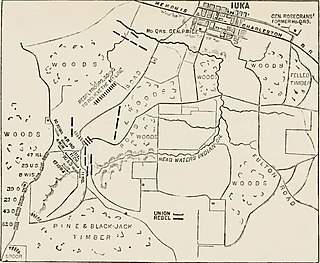
The Battle of Iuka was fought on September 19, 1862, in Iuka, Mississippi, during the American Civil War. In the opening battle of the Iuka-Corinth Campaign, Union Maj. Gen. William Rosecrans stopped the advance of the Confederate Army of the West commanded by Maj. Gen. Sterling Price.

Arlington House, The Robert E. Lee Memorial, formerly named the Custis-Lee Mansion, is a Greek revival style mansion located in Arlington, Virginia, United States that was once the home of Confederate Army General Robert E. Lee. It overlooks the Potomac River and the National Mall in Washington, D.C. During the American Civil War, the grounds of the mansion were selected as the site of Arlington National Cemetery, in part to ensure that Lee would never again be able to return to his home. The United States has since designated the mansion as a National Memorial. Although the United States Department of the Army controls Arlington National Cemetery, the National Park Service, a component of the United States Department of the Interior, administers Arlington House.

Vanderbilt Mansion National Historic Site is a historic house museum in Hyde Park, New York. It became a National Historic Landmark in 1940. It is owned and operated by the National Park Service.

Tudor Place is a Federal-style mansion in Washington, D.C. that was originally the home of Thomas Peter and his wife, Martha Parke Custis Peter, a granddaughter of Martha Washington. Step-grandfather George Washington left her the $8,000 in his will that was used to purchase the property in 1805. The property, comprising one city block on the crest of Georgetown Heights, had an excellent view of the Potomac River.
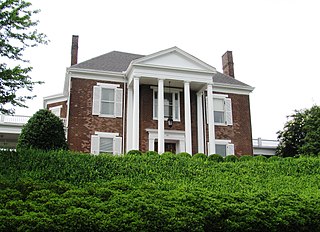
Knollwood is an antebellum historic house at 6411 Kingston Pike in Knoxville, Tennessee, United States. It is also known as Knollwood Hall, Major Reynolds House, the Tucker Mansion and Bearden Hill. The home is listed on the National Register of Historic Places.

McGregor, located on SR 547 in Port Gibson, Mississippi, was built in 1835. It was designed in Greek Revival style.
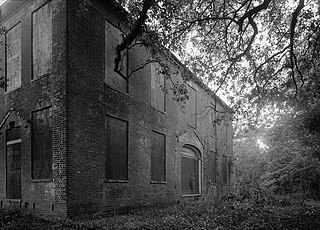
The Van Dorn House is a historic hilltop residence in Port Gibson, Mississippi built circa 1830 for Peter Aaron Van Dorn and which became the childhood home of his son, who became a U.S. Army officer then Confederate Major General Earl Van Dorn. A historic marker onsite gives the home's date as ca. 1830 and the style as Federal architecture. The residence was added to the National Register of Historic Places on June 21, 1971, and the house and surrounding 5.1 acres donated to the State of Mississippi Department of Archives and History by December 1972. In 1979 a revised site survey due to development of the surrounding area expanded the historically relevant site to about 20 acres. The house is located on Van Dorn Drive.

Wintergreen Cemetery is a historic cemetery in Port Gibson, Mississippi. It was added to the National Register of Historic Places on July 22, 1979. It is located at East Greenwood Street.
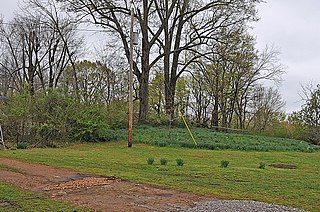
The Davis' Mills Battle Site is the historic site of an American Civil War conflict that took place on December 21, 1862. It was added to the National Register of Historic Places on October 2, 1973. It is located off Mississippi Hwy 7 in what is now Michigan City, Mississippi in Benton County, Mississippi.
The Civil War Trust's Civil War Discovery Trail is a heritage tourism program that links more than 600 U.S. Civil War sites in more than 30 states. The program is one of the White House Millennium Council's sixteen flagship National Millennium Trails. Sites on the trail include battlefields, museums, historic sites, forts and cemeteries.
Peter Aaron Van Dorn (1773–1837) was an American lawyer, judge and plantation owner. He was one of the founders of Jackson, Mississippi.

The Confederate Armory Site, a.k.a. Jones, McElwain and Company Iron Foundry, is a historic site in Holly Springs, Mississippi, USA. It contains the scant ruins of the foundry built there in 1859, converted to an armory in 1861 by the Confederate States Army, used as a hospital by the Union Army in November 1862, and razed by the Confederates a month later.

Oakleigh is a historic mansion in Holly Springs, Mississippi, USA.

Walter Place is a historic mansion in Holly Springs, Mississippi, United States. Built in 1860 for pro-Union Harvey Washington Walter, the President of the Mississippi Central Railroad. The mansion was the temporary home of Union General Ulysses Grant and his wife Julia Grant during part of the American Civil War. Later, it was the summer residence of Oscar Johnson, Jr., the co-founder of the International Shoe Company. A combination of Greek Revival and Gothic Revival architectural styles, it was the most expensive house in Mississippi on the market in 2011.

The Martin Cheairs House is a historic mansion in Spring Hill, Tennessee, USA.

Colonial Hall is a historic mansion in Oliver Springs, Tennessee, USA.
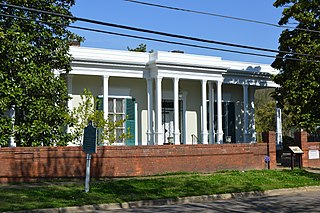
The Veranda House, also known as the Curlee House, is a historic house in Corinth, Mississippi, U.S..



















